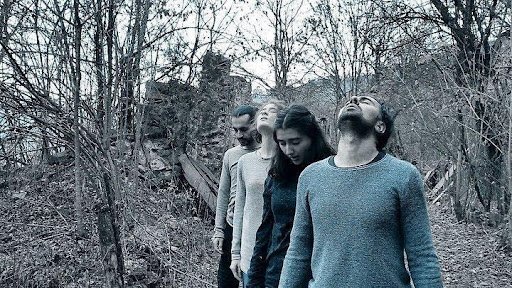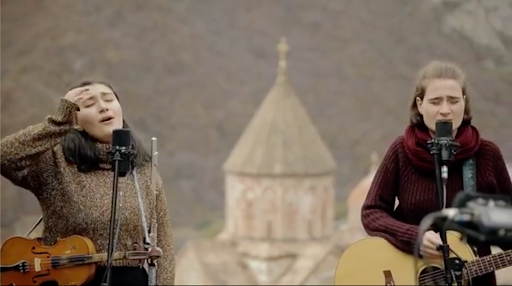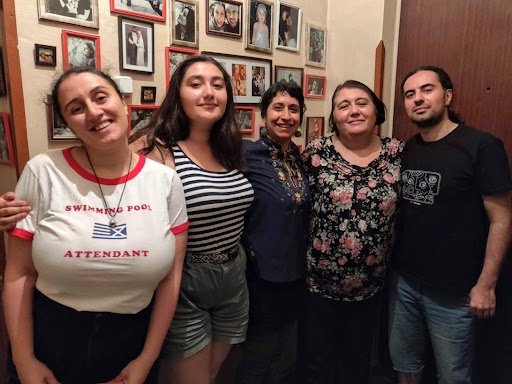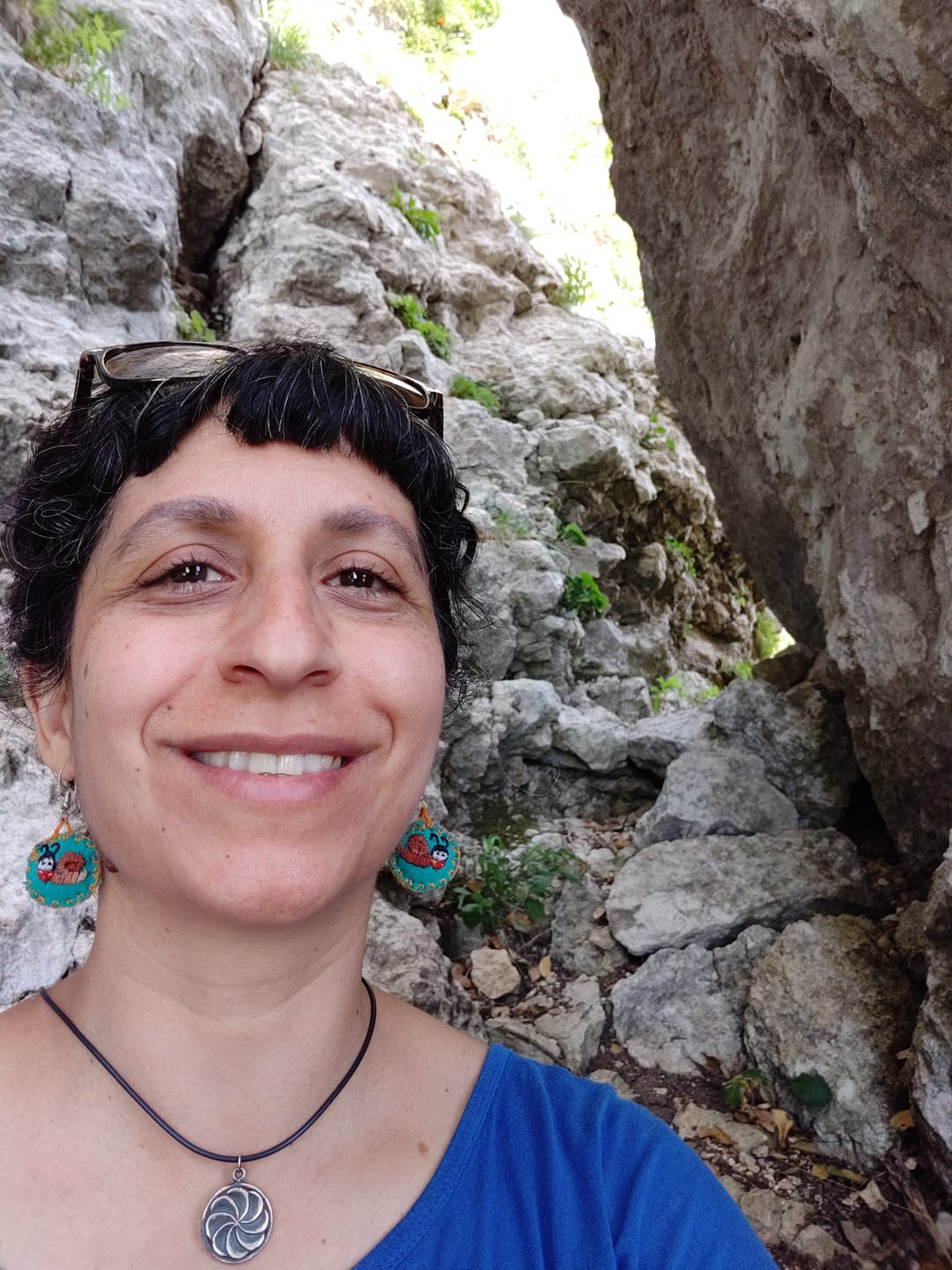
The mission of art is the destruction of barriers and walls,
things that prevent people from connecting with their home or with each other.
~Toni Morrison
Are there moments from the 44-Day Artsakh War in 2020 which never leave your side, even as we face Azerbaijan’s latest border attacks against Armenia this November 16, with more soldiers killed, captured and missing?
From my position as a diasporan now living in Armenia, to choose one such moment from last year, it is this: the early October day a beloved kuyrig, Shoghakat, wished her husband, a military officer, a happy birthday via social media as he was leaving home for the front lines. Their dear artist friend and many others had already been killed by Azerbaijan’s opening shots. In full uniform, her husband held their 11-month-old daughter close, as Shoghakat declared he would come back, and they would speak about that day for a long time.
She was right. He came back, bringing immense relief and gratitude tempered by staggering collective losses of lives, limbs and lands. In a conversation this past spring, she told me she often wonders, “What is peace, exactly? What does it look like? Is it real?” How can it be, when safety and dignity are continually violated, and the world is largely silent or complicit?
Is this what it means to be Armenian? To be forever facing our koyamard, our human struggle for survival? To keep looking life in the eye and see who is looking back?
This November, amid anniversaries of wartime deaths and dispossessions, their bright and beautiful daughter turned two years old. Like her father this October, she too has begun her next revolution around the sun—tender mercies in this world of hurt and beauty, to which this deeply committed family is no stranger.
In 2003, Shoghakat partnered with her brother Tsolak MLKE-Galstyan to launch MIHR Theatre, the first contemporary dance company in Armenia. MIHR’s visionary, award-winning projects are driven by cultural healing, education and transformation, grounded in Shoghakat’s skills as a performer and director and Tsolak’s artistry as a dancer and teacher. With integral members Petros Ghazanchyan and Eliza Baghdiyan, MIHR crafts site-specific performances and transdisciplinary workshops in cities and border villages in Armenia, Artsakh, Turkey and beyond.
Meanwhile, Shoghakat and Tsolak’s younger sister Lusine—an accomplished musician and teacher—co-founded the all-female Tiezerk (“Universe”) Band with Eliza, leading to potent collaborations with MIHR which “combine and erase the border between space, musician and dancer.” One such production, “Song of a Refugee,” was inspired by their horkour Heriqnaz Galstyan’s mixed media artworks, demonstrating intergenerational dedication to creativity, culture and justice. Juggling international grants, visas and conflicts, they have studied, performed and toured in Asia, Europe and the US. Tsolak points out that their father Hrachya Galstyan—a painter and sculptor—”put deep roots in me and in us. I could have lived in Paris or New York, but I’m staying right here, in Armenia.”
Though Heriqnaz passed away in 2015, and Hrachya in 2016, it is clear nothing can hold this family back. With COVID disruptions to in-person gatherings, Tiezerk began holding online Armenian folk music classes with students around the world. In November 2020, as tens of thousands of Artsakh families were forced into fleeing their homes and finding shelter in Armenia, Tiezerk journeyed from Armenia to Artsakh, to offer songs and reflections at the medieval Dadivank Armenian monastery—on the eve of this sacred, cultural jewel falling into oil-rich Azerbaijan’s hands. In Lusine’s words:
You feel a dissonance between yourself and your world, your inner world where you’ve tried to be just every day, and… you thought that the world would be fair towards you as well…. Then the world turns around and tells you that they are being silent because you don’t have that much money.

During the 2020 war, MIHR and Tiezerk supported Artsakh children and families and tirelessly continue to do so. They also co-organize responses to gender-based violence, including the interactive “Mapping Women’s Stories” and a Yerevan street performance in partnership with the Coalition to Stop Violence Against Women. On a lighter note, Tiezerk often plays enchanting shows and concerts in Yerevan and beyond, weaving Armenian folk songs and original songs. This summer, they were the first band to represent Armenia at a music festival in Switzerland, at a time when visibility and solidarity are critical.
In 2019, I was fortunate to cross paths with the MLKE-Galstyans in Yerevan, midway through my first pilgrimage to Turkey and Armenia. Three days before we met, while still in Turkey I found my great-grandmother’s village in Musaler, the day after a friend was arrested on April 24 in Istanbul, right in front of me. At the Şişli Armenian Cemetery, he had uttered the “G word” (i.e., genocide) at the memorial for Sevag Balıkçı, the young Armenian man shot to death on that same day in 2011, during his compulsory service in the Turkish military.
I watched Balıkçı’s loved ones grieving while groups of Turkish police watched us, holding up cell phones close to our faces, presumably to film the diverse crowd as a priest sang liturgical chants. The sun, too, kept watch over us, the trees and birdsong no less radiant under clouds of intimidation. Earlier that same day, a planned gathering to mark the genocides and deportations of Ottoman Armenians, Greeks and Assyrians had been banned.
A handful of hours after the arrest, at the isolated site of the old Şişhane train station, we gathered to remember the arrests and deportations of over 200 Armenian creatives and intellectuals from that site on April 24, 1915—a prelude to their subsequent murders, the Armenian Genocide and the 2007 assassination of Turkish-Armenian journalist and peace seeker Hrant Dink. As the sky moved through sunset hues into lavenders and indigos, the reappearance of our arrested friend brought good cheer. I guess the nearby armed police officers and large, white police vans kept the neighborhood safe from our hugs and quiet calls for justice and healing.
I arrived in Yerevan a few days later, in the black of night. A taxi whisked me away from Zvartnots airport to the place I would call home for five weeks of wonder while serving with the Teryan Cultural Center, excellently arranged by Armenian Volunteer Corps and Birthright Armenia. Call it kismet that my host family was the illustrious MLKE-Galstyans, in the very same neighborhood where my Musalertsi great-grandmother had come in the late 1940s from Beirut to live out her days.
Surrounded by Hrachya and Heriqnaz’s ancestrally inspired artworks, each evening we all gathered round the family table, breaking bread and sharing stories late into the night. Often, artist friends would drop by, just as in their father’s time. Each morning, over breakfast and cups of haygagan soorj, their brilliant and beloved mother Mariam told me of life in Soviet time and of the long, dark winters in the early 1990s. Most days, we were laughing about life as it is. Words I was learning, like varoonk (“cucumber”), were guaranteed to bring chuckles. They generously helped me navigate life in Yerevan and invited me to their performances—immersing me in art, culture and community and opening doors towards my return to Armenia this past spring.
Twice this year, I have seen their innovative and moving work with children displaced from Artsakh. The first time in June came through Shoghakat’s invitation to join a day of reunion, creativity and care in Yerevan with a group of children from Karvachar and their teacher now spread out throughout Armenia, arranged with a local museum, theatre and ice cream shop. I referenced that experience in a meditation for the Armenian Weekly on agency, denial and bearing witness. The piece concludes with Shoghakat’s assertion that “we must be able to look into the eyes of this generation,” wisdom which MIHR and Tiezerk embody, note by note and step by step.
The second time in July was a wonderful surprise. One day, while with “Lumières d’Artsakh,” the Charjoum-organized day camp supporting 110 displaced children, I learned there would be a dance and music class that morning. My heart sang when I walked into the classroom and saw Tsolak, Shoghakat, Eliza and Lusine! After happy hugs, they led us—20 children and four volunteers—in circles of music and movement, channeling pain into possibility for the sake of the past, present and future.
Not if, but when you come to Armenia, be sure to seek out MIHR Theatre and Tiezerk Band. We might not know what they’ll be up to next, but we can be certain that with the forces behind us and against us, their projects will always bring spirit in this richly felt life of grief and praise.

From left to right: Shoghakat, Lusine, Elise, Mariam, and Tsolak
Author’s Note: This piece is made possible through the MLKE-Galstyans’ relentless dedication, openness and generosity of spirit, with much gratitude from yours truly for the stories and bonds between us.



Love it!